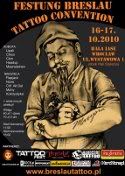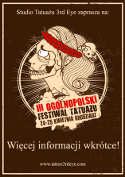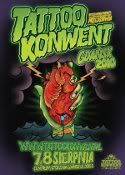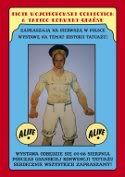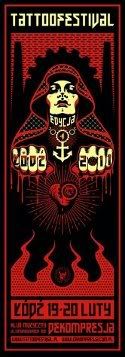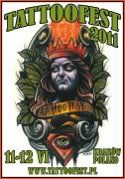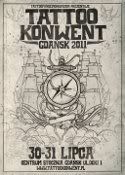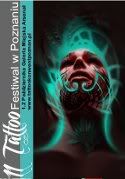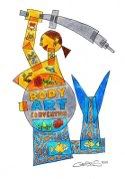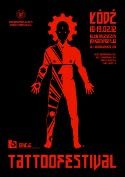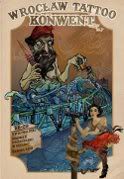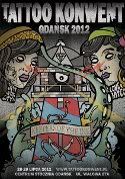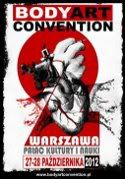PL:
Centrum
instalacji Angeli Su "Dziewczyna z Hartford i inne historie" stanowi wykonany bez tuszu tatuaż przedstawiający 39 linii bądź
"pręg" złożonych z fragmentów psalmów. Tatuaż
nawiązuje do chrześcijańskiej tradycji biczowania jako próby
duchowego oczyszczenia. W Biblii czytamy o 39. uderzeniach jakie
Chrystus otrzymał z rąk swoich oprawców; liczbie uznawanej z
Rzymian za wyraz miłosierdzia, ponieważ 40 uderzeń, było traktowane na równi z wyrokiem śmierci. Fotografie ukazują krzyżujące się linie tekstu
pokrywające plecy artystki, końcowy efekt ponad
czterogodzinnego tatuowania.
Tatuowaniem bez tuszu, Su pyta także, czy ból stałby się głównym celem tatuowania jeśliby zabrać dwie główne składowe tatuażu, to, że jest widoczny i stały? I czy wraz z upływającym czasem, gojącymi się ranami i blaknącym wzorem (a także wytatuowaną modlitwą) uzdrowienie przestanie być czysto fizyczne?
Jeśli podoba wam się pomysł z beztuszowym tatuowaniem, przypominam o Amandzie Wachob
Tatuowaniem bez tuszu, Su pyta także, czy ból stałby się głównym celem tatuowania jeśliby zabrać dwie główne składowe tatuażu, to, że jest widoczny i stały? I czy wraz z upływającym czasem, gojącymi się ranami i blaknącym wzorem (a także wytatuowaną modlitwą) uzdrowienie przestanie być czysto fizyczne?
Jeśli podoba wam się pomysł z beztuszowym tatuowaniem, przypominam o Amandzie Wachob
ENG:
AngelaSu's installation The Hartford Girl and Other Stories, is a multi-layered, allegorical narrative whose central image is the creation of a complex, inkless tattoo of 39 lines or ‘slashes’ composed purely of lines of prayers. The tattoo visually and symbolically references the ritual scourging of the body in Christian tradition as a means of seeking spiritual purification. In the Bible, Jesus is said to have received 39 lashes on his back at the hands of his persecutors; a number believed by the Roman authorities to be merciful, as 40 lashes was considered as deadly. The photographs reveal the finished work of over an four-hour period, a cross- hatching of linear scars of text covering the artist’s back, written free-hand by the tattooist.
AngelaSu's installation The Hartford Girl and Other Stories, is a multi-layered, allegorical narrative whose central image is the creation of a complex, inkless tattoo of 39 lines or ‘slashes’ composed purely of lines of prayers. The tattoo visually and symbolically references the ritual scourging of the body in Christian tradition as a means of seeking spiritual purification. In the Bible, Jesus is said to have received 39 lashes on his back at the hands of his persecutors; a number believed by the Roman authorities to be merciful, as 40 lashes was considered as deadly. The photographs reveal the finished work of over an four-hour period, a cross- hatching of linear scars of text covering the artist’s back, written free-hand by the tattooist.
The creation of the inkless tattoo addresses questions posed by the
artist as she developed the concept for her work: what if the two
main qualities of a tattoo are taken away, so that the tattoo is no
longer decorative and permanent—would the focus be solely on pain
itself? And as, over the weeks, the scars of the tattoo heal and fade
away (and with them, the inscribed prayers) will other levels of
healing take place?
If you like the idea of inkless tattooing, you might wanna see some of Amanda Wachob's work.
If you like the idea of inkless tattooing, you might wanna see some of Amanda Wachob's work.






















